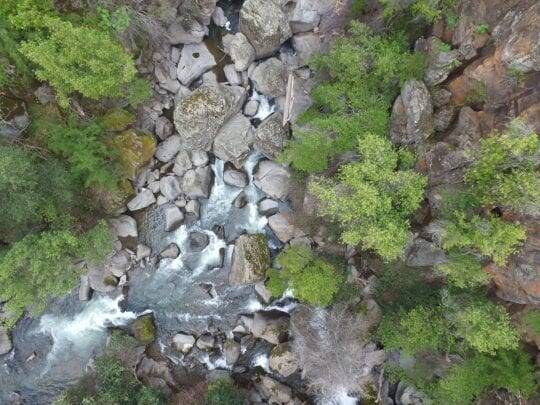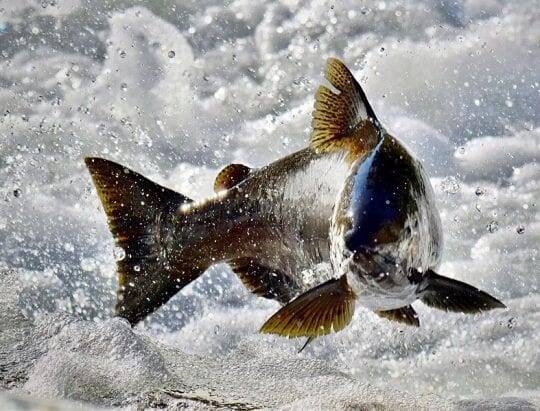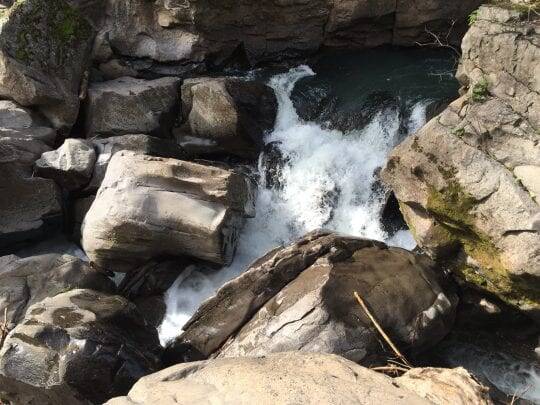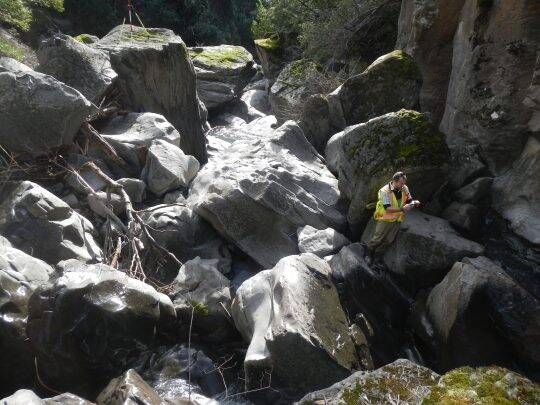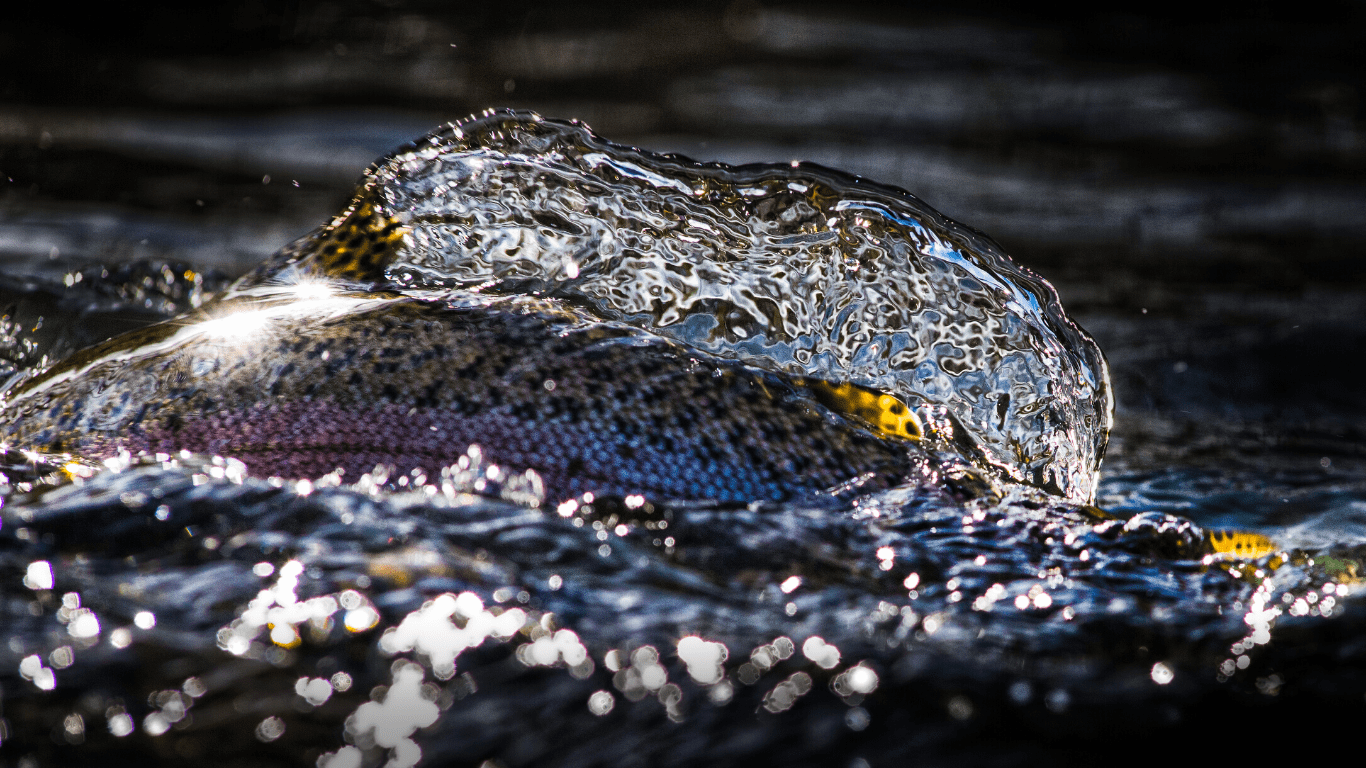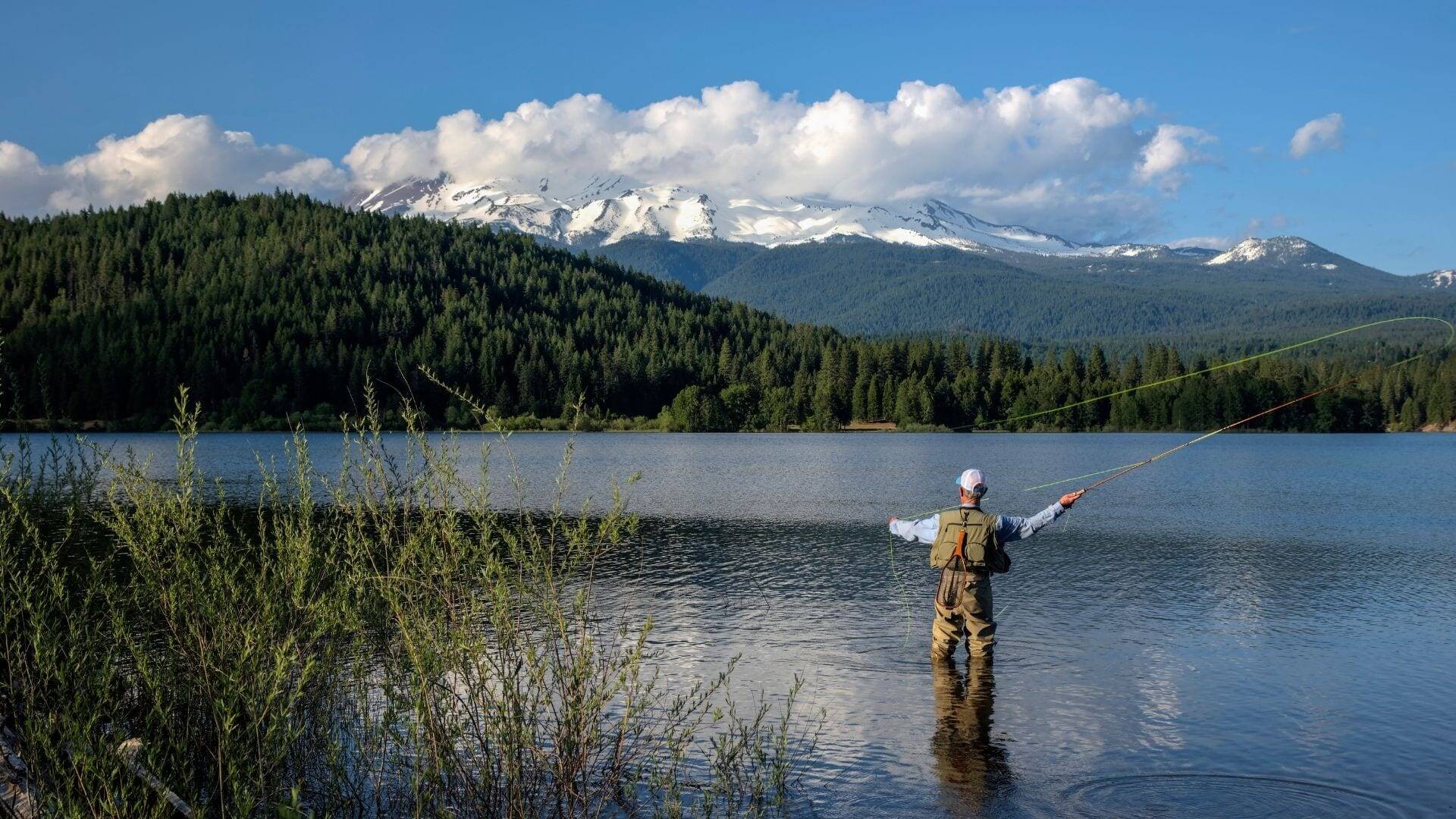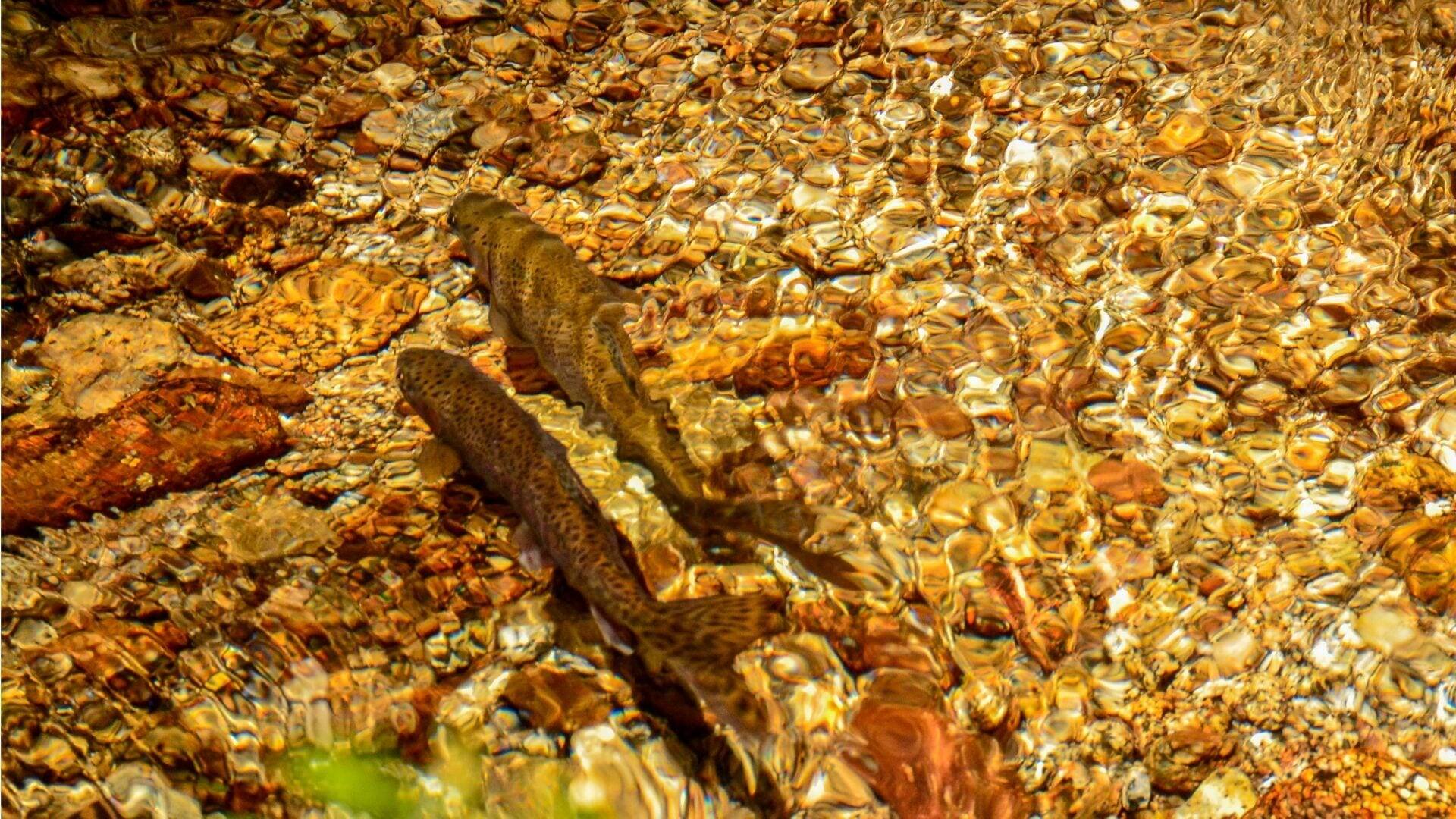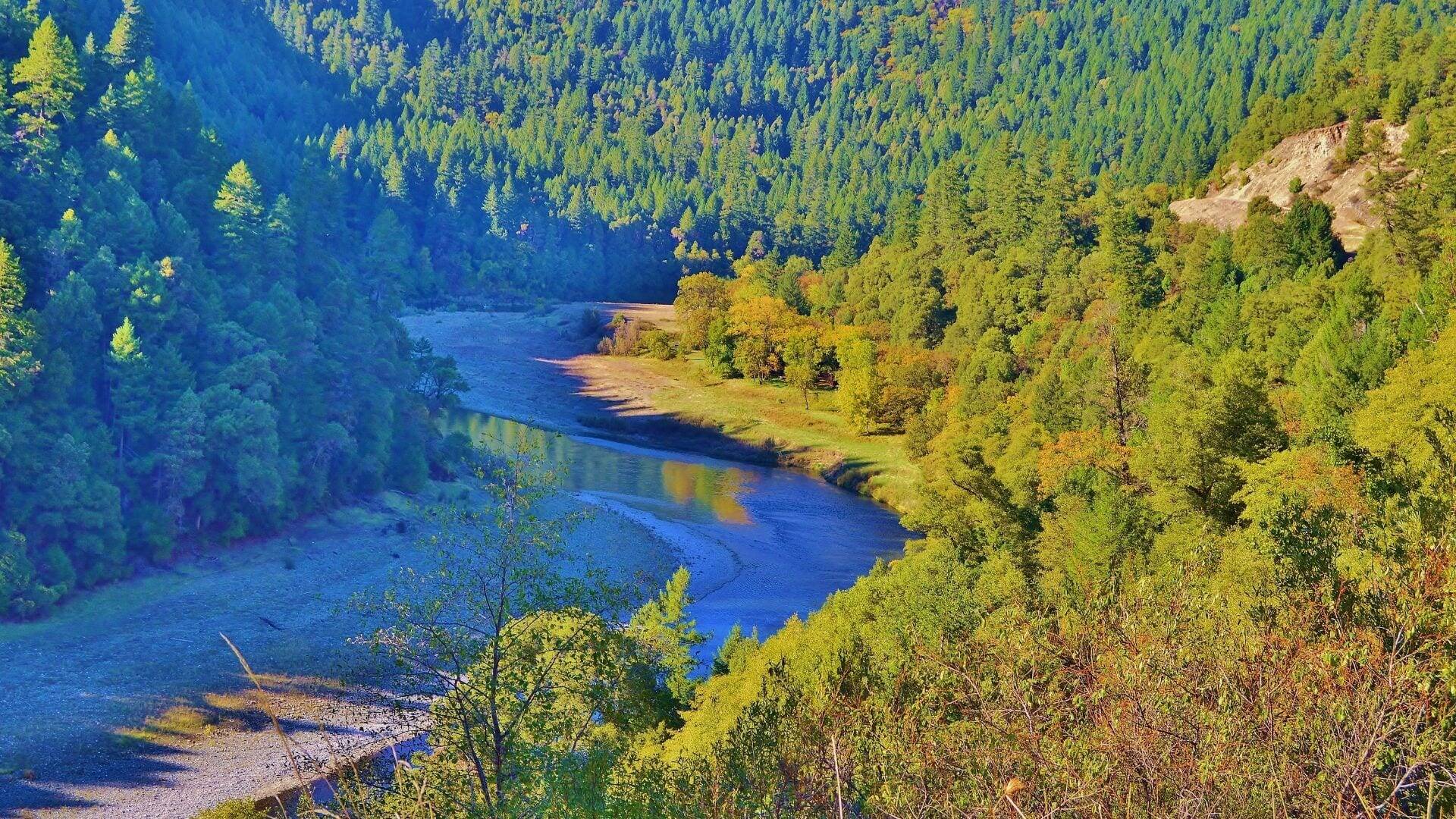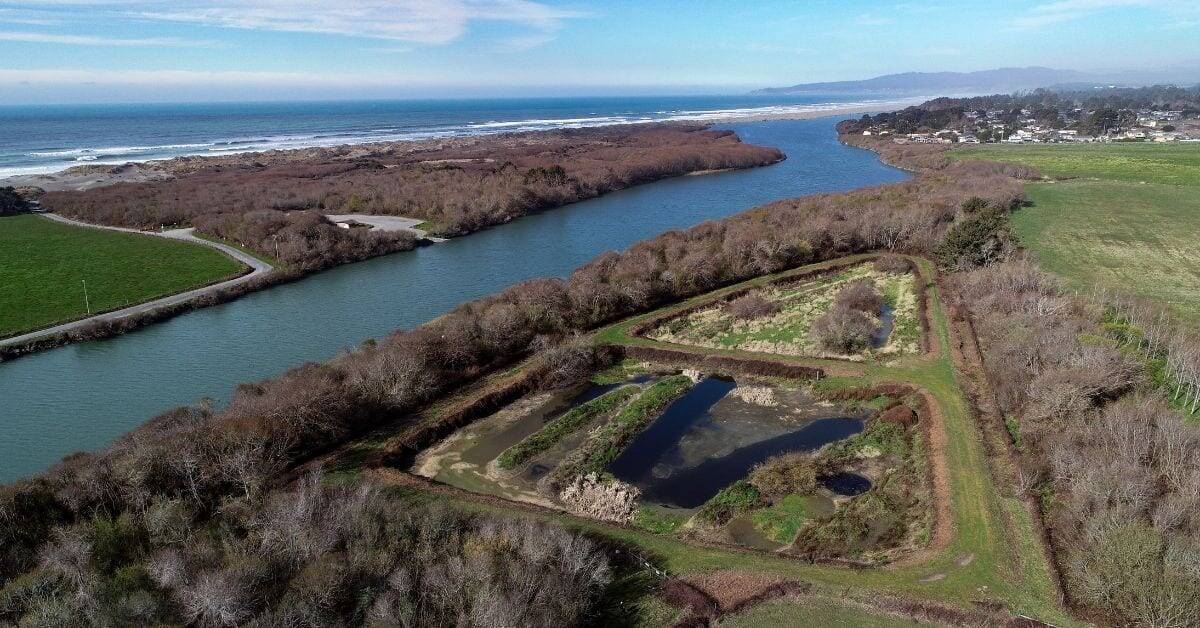Supporting the Reintroduction of Sacramento Winter-run Chinook to the Battle Creek Watershed
The day the gates closed on the Shasta Dam in 1943, approximately 200 miles of California’s prime salmon and steelhead spawning habitat disappeared. Although devastating for all four distinct runs of Central Valley Chinook salmon, the high dam hit the Sacramento winter-run Chinook the hardest.
Sacramento winter Chinook—the only winter-run Chinook in the world—evolved from the cold, spring-fed waters of the McCloud River, Upper Sacramento, Pit Rivers, and Battle Creek.
These streams originate from the volcanic aquifers of Mount Shasta and Lassen, which store water from snowmelt and slowly release it as steady, reliable, cold flows throughout summer months.
Cover Photo: Battle Creek Beauty by Jane Work

Access blocked to cold water habitat
Winter-run take (or perhaps we should say took) advantage of this unique consistent source of ice-cold summer flow in order to spawn in April through early August.
Salmon are cold-water fish and the cold flow from volcanic springs allowed salmon eggs and embryos to incubate in the cold water they need even during the hottest time of the year.
But when Shasta Dam blocked access to this cold summer water, it permanently disrupted one of the CA’s most unique salmon life-history strategies.
Photo: Jane Work
Vulnerable Populations
Today, Sacramento winter Chinook are listed as an endangered species by both the state and federal governments. Populations over the last 10 years now average less than 5,000 fish, down from historical runs of 200,000 spawners per year.
Population numbers hit an all-time low abundance in 1994 when, according to the California Department of Fish and Wildlife, an estimated 189 adults returned. From 1967 through the early 1990s, populations declined at an average rate of 18% per year, or roughly 50% per generation.
CalTrout’s State of the Salmonid II Report (SOS II) lists Sacramento Winter-run Chinook as highly vulnerable to extinction within the next 50 years.
Extirpated from their historical mountain, spring-fed watersheds, the only remaining population clings to existence in the Sacramento River on the sweltering valley floor near Redding, surviving on cold water released from Shasta Reservoir and Keswick Dam.
This desperate strategy leaves winter-run highly vulnerable to water operations at end of every summer when the “cold water pool” in Shasta reservoir is at it’s lowest but especially during drought.
For example, California Department of Fish and Wildlife (CDFW) estimated that in 2014 and 2015 approximately 95 percent of the juvenile Sacramento River winter-run Chinook production was lost after the cold-water pool in Shasta Reservoir was depleted and the Sacramento River exceeded temperature thresholds for spawning and egg incubation.
Despite more than 100 years of habitat degradation and population declines, new opportunities exist to reverse negative trends; and CalTrout is ramping up efforts in 2020 to ensure the future of the species.
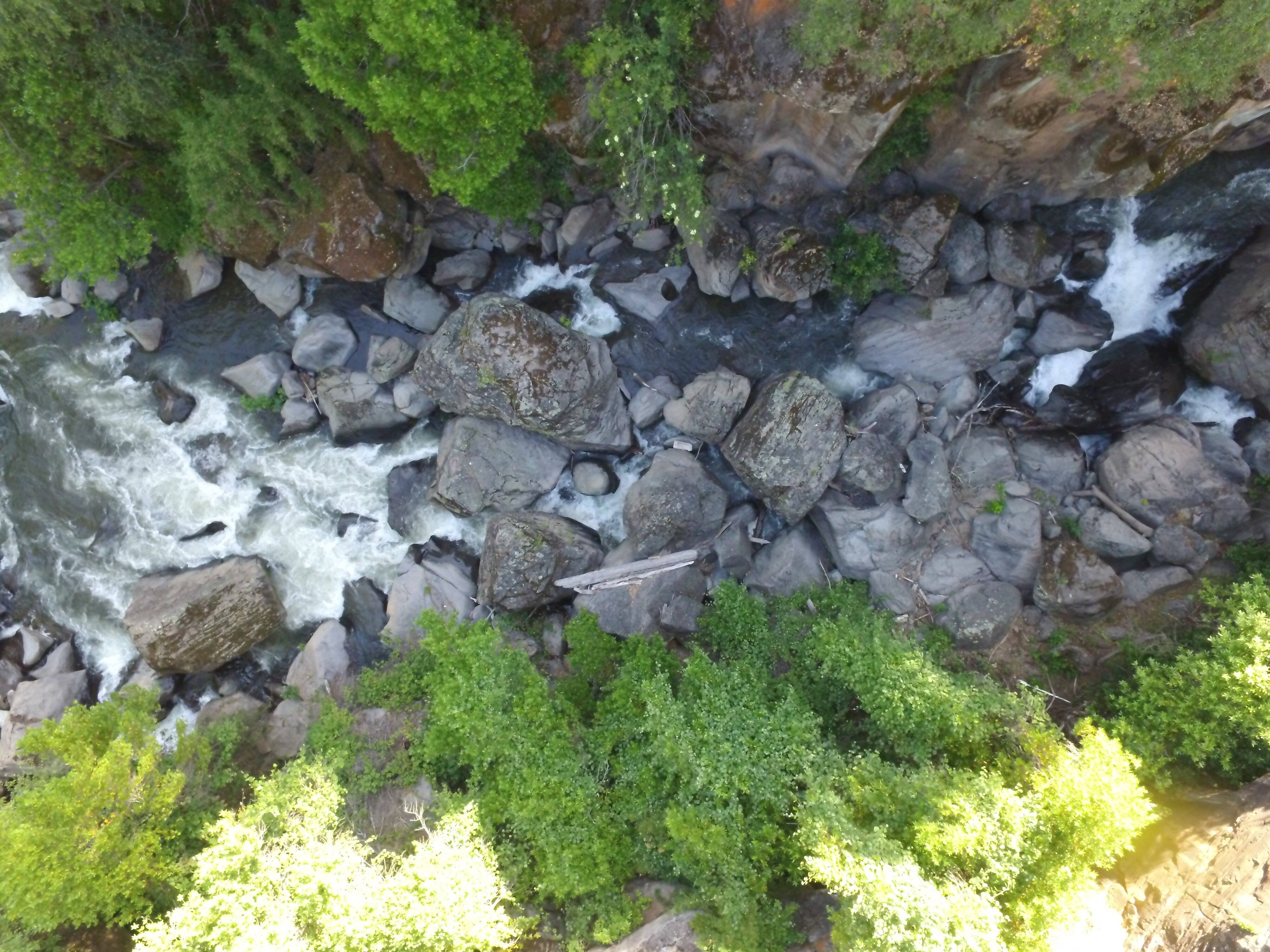
Restoration Opportunity
The Battle Creek watershed presents one of the most exciting restoration opportunities for salmon diversity in CA.
Battle Creek’s source waters come from volcanic springs, smaller in size but similar to those that feed the native spawning range of winter-run in the now inaccessible McCloud, Pit, and Upper Sacramento Rivers.
Like the McCloud, Pit, and Upper Sacramento Rivers, most of the accessible habitat in Battle Creek was also cut off by hydropower development in the 1900s.
However, a recent Memorandum of Understanding signed between PG&E and regulators has resulted in fish-friendly modifications to existing dams and diversions, and improvements in flow management.
These changes present new and exciting opportunities for restoring volitional access to suitable winter-run habitat.
Photo: Michael Love & Associates
Reintroduction Plan
Our state and federal agency partners have already been working for decades on the Battle Creek Salmon and Steelhead Restoration Plan (BCRP) and the Battle Creek Winter-Run Chinook Salmon Reintroduction Plan (Reintroduction Plan).
These guiding plans identify key threats and present strategies for recolonization and long-term management of reintroduced stocks.
In the spring of 2018, a coalition of state and federal agencies released over 200,000 hatchery-raised juveniles into the watershed to jumpstart reintroduction to historic habitat. This is just the beginning.
CalTrout will now directly engage in restoration efforts in 2020 with a $5.2m grant from the US Fish and Wildlife Service and California Department of Fish and Wildlife to restore fish passage to critical spawning and rearing habitat in North Fork Battle Creek.
The Eagle Canyon reach of the North Fork is particularly important for the future of winter-run because an abundance of spring water generates reliable summer base flows and ideal temperatures, which could support natural reproduction.
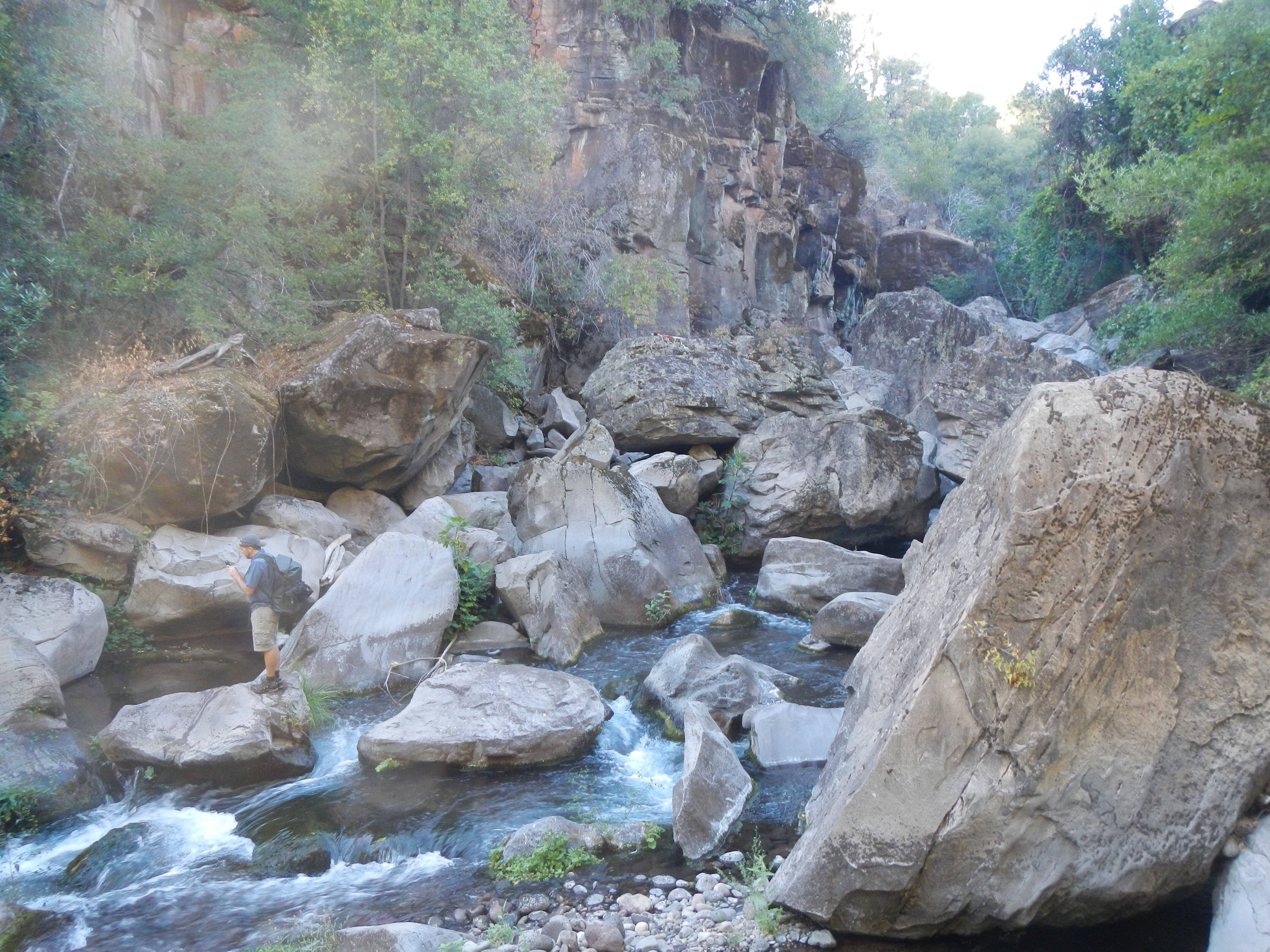
Objectives
Over the next two years, Caltrout’s objective will be to reconfigure the stream channel in Eagle Canyon to open up access to critical habitat. Fish passage through Eagle Canyon is currently blocked by massive house-size boulders and unjumpable cascades, which are likely remnants of more than a century of hydropower development and human modification of the watershed.
According to the recovery plan, to meet the goal of creating a viable, independent population of winter Chinook salmon in Battle Creek, the quality and quantity of habitat must be sufficient throughout the life cycle of the species to support an average annual run size of 850 adults.
To meet this objective, CalTrout and our partners at Syblon Reid Construction, Aquaterra Consulting, and Michael Love & Associates Engineering are tasked with reconstructing the North Fork channel in Eagle Canyon, which includes removing thousands of tons of boulders, building deep plunge pools to allow fish to maneuver through powerful hydraulics at different water levels, and reducing the height of boulder drops to a maximum jump reach of 3-4 feet.
Once completed, the new channel design will open up approximately eight miles of ideal spawning and rearing habitat for winter Chinook: the first of its kind available in CA in many decades.
Photo: Michael Love & Associates
Lower Battle Creek
Lower Battle Creek also has high-value floodplain restoration potential.
Last winter, in partnership with local ranchers and the US Fish and Wildlife Service’s Coleman National Fish Hatchery (fortuitously, the largest salmon hatchery in the state is located in lower Battle Creek) CalTrout has demonstrated that young salmon reared on flooded pasture on cattle ranches located in lower Battle Creek have similarly fast growth and health benefits as fish reared on floodplain farm fields in the lower Sacramento River (such as Yolo Bypass rice fields).
The higher growth rates experienced by juvenile fall-run Chinook salmon reared on cattle pastures managed as floodplains opens the possibility of releasing larger, fatter, healthier Battle Creek fish (greater size at ocean entry correlates with improved ocean survival) into the river earlier in the season when flows are more likely to be high, cold, and muddy and when salmon predators are less active (river conditions correlated with improved in-river survival for young salmon on the way to sea).
Future Outlook
Battle Creek is now widely recognized as one of the best potential watersheds for ensuring the future genetic diversity of winter Chinook.
Combined with the active Reintroduction Plan currently underway and improvements in hydro and floodplain management, our ridge top to river mouth project approach represents a viable solution set for restoring the habitat needed by winter-run Chinook at all of their life stages and protecting a uniquely Californian salmon, found nowhere else on earth.
CalTrout is proud to be collaborating with the dedicated and committed state and federal fisheries managers to make these projects a reality.to restore Battle Creek at the landscape scale and protect a uniquely Californian salmon, found nowhere else on earth.






